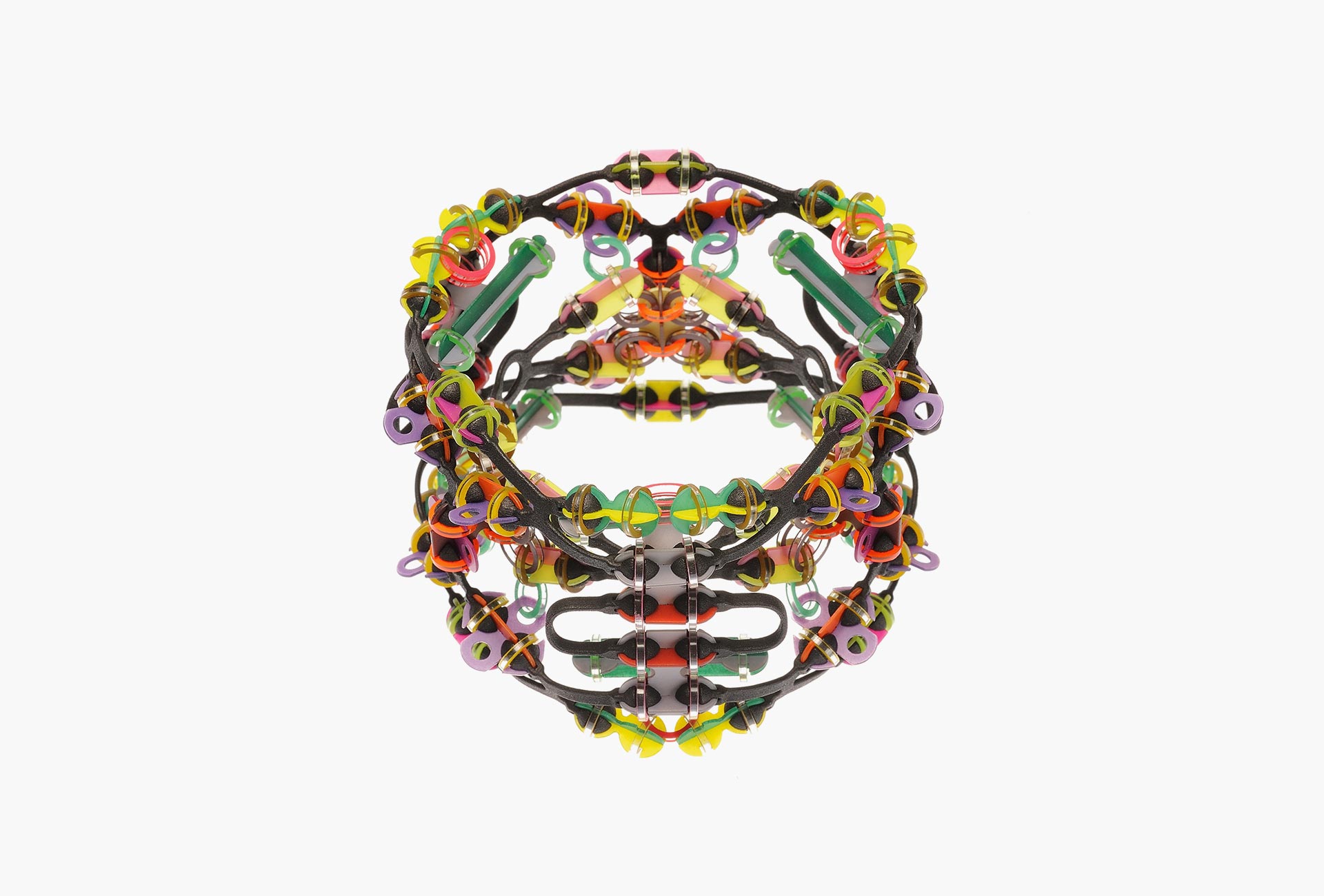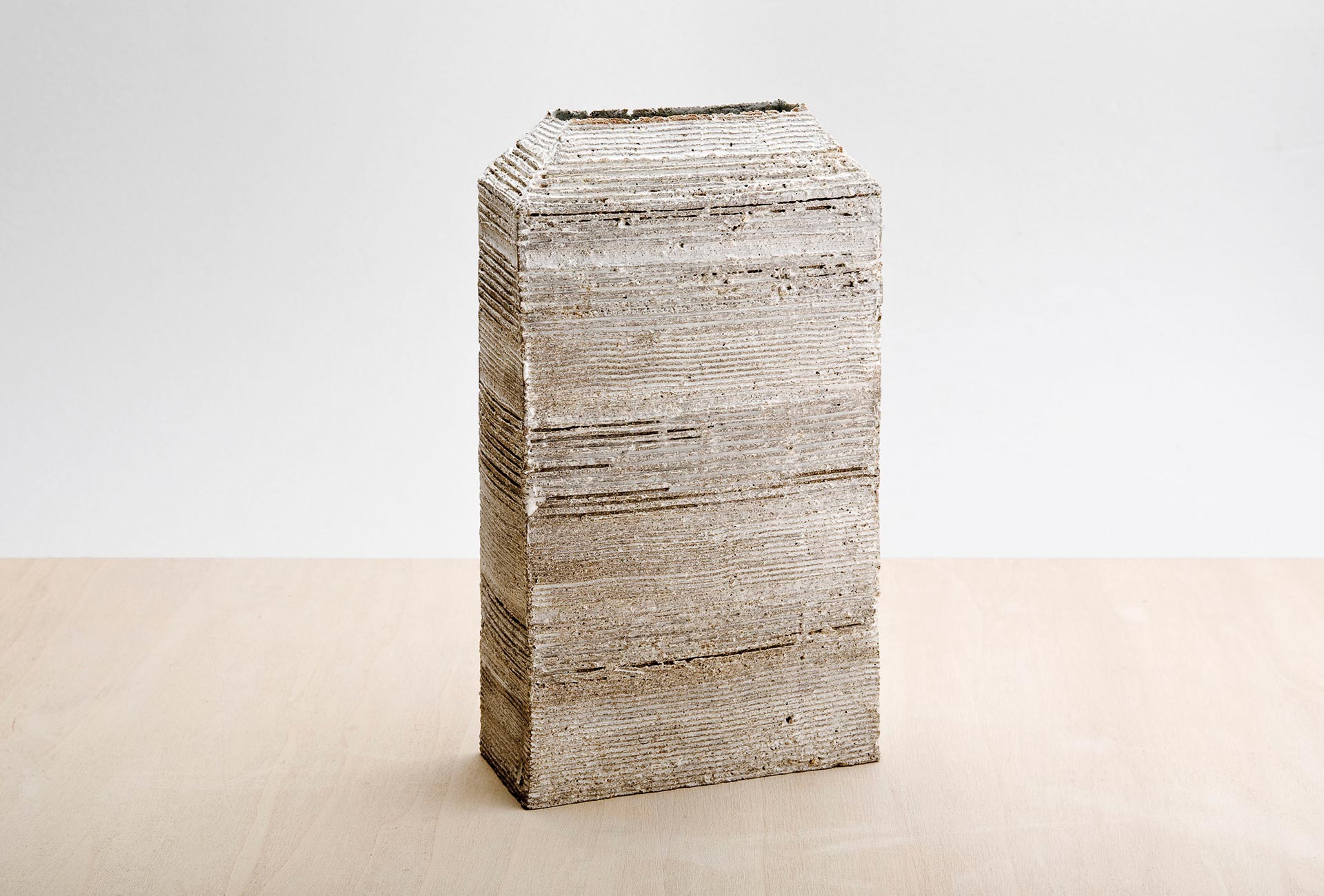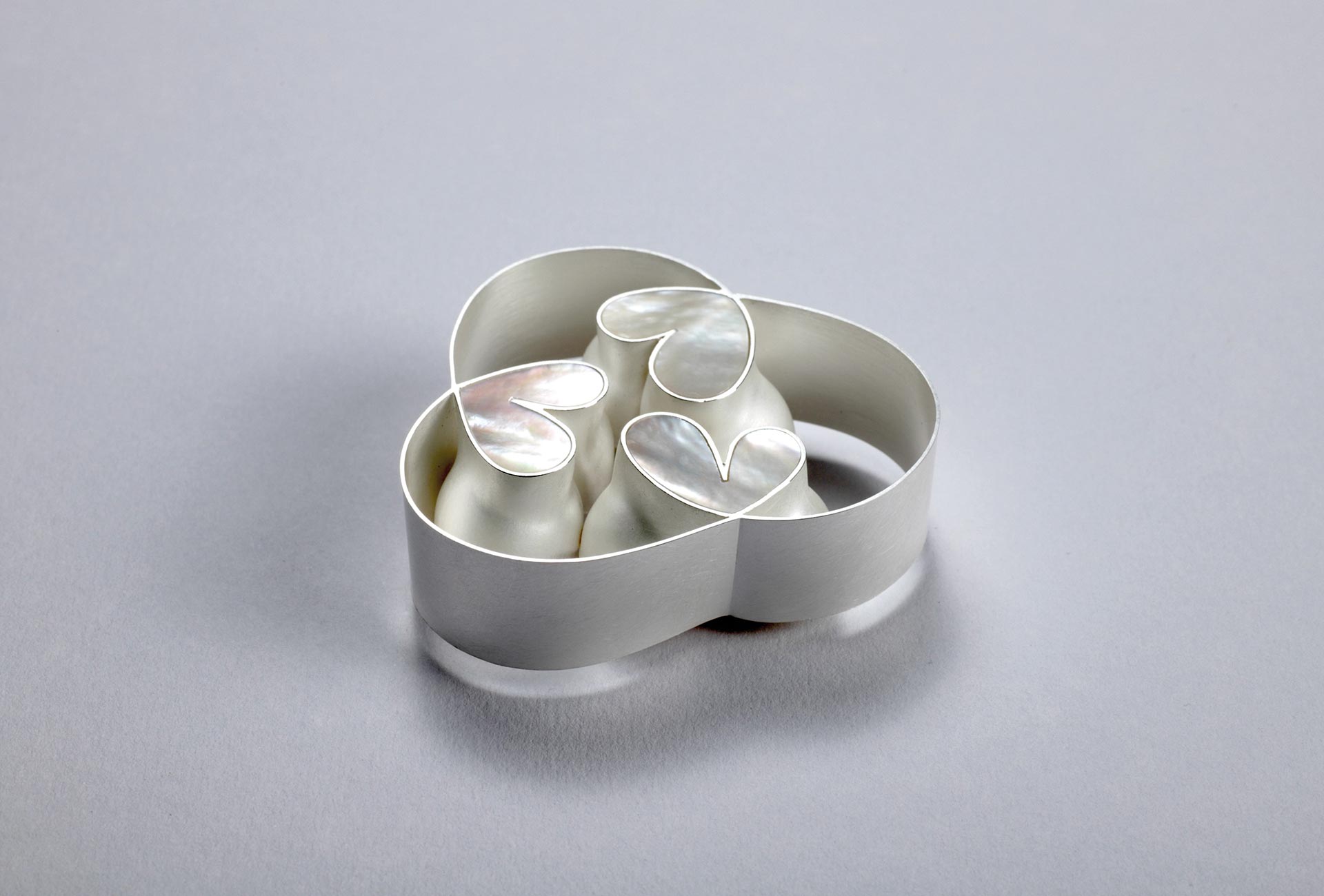For the 2024 exhibition of the Forum for Applied Arts at the Neues Museum in Nuremberg, the five members Paul Müller, Cornelius Réer, Sabine Steinhäusler, Annette Zey and Sabine Ziegler have invited five female artists as “elective relatives.” The focus is on “related” forms and content as well as ways of working and thinking.
The metal designer Paul Müller chose the Berlin-based jewelry artist Svenja John. Both artists place importance on the playful use of geometric forms and the exploration of the sculptural possibilities of an idea without losing sight of its function. Although Müller and John are familiar with traditional artisanal techniques, they have no reservations about utilizing industrial production methods. Müller works with steel, stainless steel, bronze, brass and silver for his clear sculptural forms, while Svenja John uses colored elements made of polycarbonate and nylon, has them cut using modern production techniques and combines them to create ornamental structures.

Forum members Angewandte Kunst Nürnberg have invited participants with “related” positions to the exhibition in the Neues Museum. Paul Müller, candlestick, Stilles Fest 1, stainless steel, W 55 cm, D 55 cm, H 50 cm. Photo Paul Müller.

Svenja John, bracelet, Lalibela, polycar-bonate Makrolon®, nylon 3D print, finely pigmented acrylic paint, W 8 cm, L 8 cm, H 7 cm. Photo Tivadar Nemesi.
The goldsmith Sabine Ziegler chose the Munich-based ceramist Christine Wagner as her “elective relative.” Both love clear forms and delicate surfaces. Christine Wagner’s stoneware vessels and vases are based on the basic geometric shapes of cylinders, cubes and cuboids; lines, grids and stamped impressions contrast with the architectural severity of the exterior forms. Sabine Ziegler saws and files the shapes of her rings from special wax. The resulting structures are further processed after casting.

Sabine Ziegler, ring with lines, silver 925, oxidized Ø 2.7 cm, H 18 cm. Ring hallmarked, silver 925,
Ø 26 cm, H 14 cm. Photo Paul Müller.

Rectangular vase by Christine Wagner in the exhibition Wahlverwandtschaften. Stoneware, cross-grooved structure, kaolin, 17.5 x 7.5 x 32.5 cm. Photo Oliver Maier.
The silversmith Annette Zey and the ceramist Maya Fenderl from Halle create vases and vessels in the field of tension between nonutilitarian sculpture and utilitarian object. Maya Fenderl’s abstract vase sculptures are full of character and have a shrill, buoyant spirit. Their useability is secondary. This also applies to Annette Zey’s bowl objects. Both artists are united by their search for individual shapes and structures and the combination of modules to create vessels.

Left: Annette Zey, Platanus bowl, brass, H 30 cm. Photo Annette Zey.
Right: Maya Fenderl, vessel Tröte [Trumpet], ceramic, glazed, H 75 cm. Photo Alexander Burzik.
The glass artist Cornelius Réer and the Lübeck-based silversmith Beate Leonards love to play with shapes and the aesthetics of simplicity. Beate Leonards’ vases are mobile figures that she assembles from several asymmetrical, conically shaped rings to produce a single body. Reer has recently been using steel molds to produce asymmetrical forms with semitransparent surfaces.

Left: Beate Leonards, vase, tombac, patinated, H 21 cm. Photo Beate Leonards.
Right: Cornelius Réer, Modul, glass, metallurgical technique, H 31 cm, Ø 13 cm. Photo Cornelius Réer.
Sabine Steinhäusler and Christine Graf from Munich employ traditional goldsmithing techniques in an innovative and experimental way. Both artists often begin with hollow forms and tubes. Steinhäusler sculpturally alters them through deformation via stretching or compression, while Graf transforms them into color spaces with enameling.

Christine Graf, brooch, hallucigenia, copper net, enamel, gold 900, silver 925 blackened, steel pin, 12.5 x 9.4 x 2.4 cm. Photo Christine Graf.

Sabine Steinhäusler, brooch, fine silver, silver 925, mother-of-pearl, steel pin, 6 x 5 x 3 cm. Photo Paul Müller.
Supplementary with the Wahlverwandtschaften exhibition, the EinBlick Biennale studio days are being held in Nuremberg for the twentieth time. The participants are welcome to invite guests from Germany and neighboring countries. Works by 50 to 60 artisans from a wide range of disciplines will be on display in the studios. Visitors can get to know the production spaces and the artists during the three-day exhibit. The opening is scheduled for November 7, 2024 in the Neues Museum Nuremberg.
The Forum for Applied Arts was founded in 1996 and has been a nonprofit association of Nuremberg-based artisans since the beginning of 2003. It was established in response to the scarcity of opportunities for presentation and sales. This situation has changed for the better thanks to the studio days for applied art and themed exhibitions. The Forum for Applied Arts cooperated with the institutions and museums of the city of Nuremberg, in particular the Germanisches Nationalmuseum and the Neues Museum Nuremberg. This enabled contemporary trends and positions in national and international arts and crafts to be presented to a broad public in Nuremberg.
- —
-
Wahlverwandtschaften (Elective affinities)
Neues Museum Nuremberg
D-90402 Nürnberg - Link